 Web Front-end
Web Front-end JS Tutorial
JS Tutorial Questions about whether there are parentheses after the event processing function name in JS
Questions about whether there are parentheses after the event processing function name in JSToday I summarize a small detail about event handlers. First, let’s review some concepts of event processing.
Event processing (event binding) in JS is to let some or certain events trigger certain activities. There are two common forms, namely DOM Level 0 and DOM Level 2. The biggest difference between these two methods is that DOM level 0 event processing can only be used for event bubbling, while DOM level 2 event processing can support event bubbling and event capture respectively by setting the third parameter.
DOM level 0 event processing generally assigns a function to an event handler directly. You can assign an event handler directly to the element, as shown in method 1; you can also assign the function to the event handler in the script. , as shown in method two.
<!--方式一-->
<div onclick="fun1();fun2('world!');"></div>
<!--方式二-->
<div id="a">点我</div>
<script>
var a=document.getElementById("a");
a.onclick=fun1; //方式二
function fun1(){
alert("hello!");
}
function fun2(cc){
alert(cc);
}
</script>
The difference between the two methods is also shown in the above example. The first method can bind multiple processing functions at the same time, but please note that it must be a global function, otherwise a Reference error will be thrown. The second method can only bind one processing function at a time, otherwise the new function will overwrite the old function.
DOM level 2 event processing does not directly bind the processing function, but adds the function as an event listener as follows. It can also bind multiple processing functions without overwriting. However, this method has browser compatibility issues, and the attachEvent method must be used instead under IE.
a.addEventListener("click",fun1,false); //事件冒泡
a.addEventListener("click",anotherFun,false); //不会覆盖上一事件,均被执行
That’s it for a brief review, let’s get back to the topic. I wonder if you have noticed a confusing little detail during the review process, that is, when referencing a function, sometimes parentheses are added after the function name. without adding parentheses. How does this affect the operation of the program? I have briefly summarized the following based on my own understanding after consulting the information.
The first thing is to add parentheses. You may often write "fun1();" in a program. Yes, adding parentheses after the function name means executing the function immediately. If the return value exists in the function memory, the value will be obtained. If you use this a lot, you may get used to writing it like this in all places where functions are called, such as the event handling function mentioned before. However, if you do this it can cause some out of control situations. For example, you obviously only want to execute a function when you click on an element, but you find that the function is executed at the beginning. You can find that the DOM0 mode 2 and DOM2 level event processing functions used in the above example do not add parentheses after the function name, the reason is to avoid this situation. If you add parentheses, the function fun1 will be triggered and executed immediately.
Then why are there brackets in DOM0 method one? That's because the quotes between the tag's event attributes will be directly executed as js statements. Only by adding parentheses can the function be called and executed. However, since the event is bound using an element tag, the timing of execution is controlled to be triggered when the tag is clicked.
What if there is no function name and you want to execute it immediately? That is, the anonymous function expression is executed immediately. This mode is very common. Let’s see if there is an immediate execution parentheses behind it? Note that the parentheses surrounding the entire function body in this IIFE form limit the scope. Children's shoes who are specifically interested in IIFE can check the relevant information. I will not go into details here.
(function(){
//do something...
})();
Now let’s analyze the one without parentheses. We mentioned earlier that not adding parentheses can avoid getting out of control. This is because passing only the function name to the event is equivalent to passing the function pointer (that is, the entry address of this function) to the element event. The advantage of this is that the function can be found and executed when needed. To use a small metaphor, when you meet your friend, when you add parentheses, your friend will immediately appear in front of you. He doesn't care whether you are busy at the time, and there is an uninvited and unpleasant feeling; Not adding parentheses is equivalent to your friend telling you where his home is and coming to him when you need him. This is really a considerate friend. Therefore, most event bindings just pass a function pointer, which is the function name, to the event.
There is another question at this time. The functions explained before are all parameterless functions. What if it is a parameterized function like fun2 in the code example? Can we only use DOM0 method one? Of course it is negative. Try not to use DOM0 mode one, which does not comply with the principle of separation of structure and behavior. Generally, this situation is solved by using anonymous functions, as shown in the following code. If you have any good suggestions, you can leave a message and share them~
//DOM Level 0
a.onclick=function(){
fun2("world!");
};
//DOM Level 2
a.addEventListener("click",function(){fun2("world!");},false);
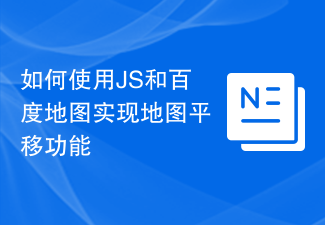 如何使用JS和百度地图实现地图平移功能Nov 21, 2023 am 10:00 AM
如何使用JS和百度地图实现地图平移功能Nov 21, 2023 am 10:00 AM如何使用JS和百度地图实现地图平移功能百度地图是一款广泛使用的地图服务平台,在Web开发中经常用于展示地理信息、定位等功能。本文将介绍如何使用JS和百度地图API实现地图平移功能,并提供具体的代码示例。一、准备工作使用百度地图API前,首先需要在百度地图开放平台(http://lbsyun.baidu.com/)上申请一个开发者账号,并创建一个应用。创建完成
 js字符串转数组Aug 03, 2023 pm 01:34 PM
js字符串转数组Aug 03, 2023 pm 01:34 PMjs字符串转数组的方法:1、使用“split()”方法,可以根据指定的分隔符将字符串分割成数组元素;2、使用“Array.from()”方法,可以将可迭代对象或类数组对象转换成真正的数组;3、使用for循环遍历,将每个字符依次添加到数组中;4、使用“Array.split()”方法,通过调用“Array.prototype.forEach()”将一个字符串拆分成数组的快捷方式。
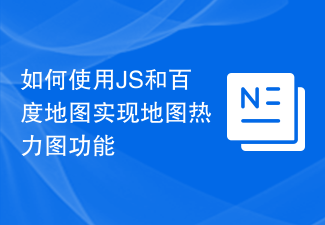 如何使用JS和百度地图实现地图热力图功能Nov 21, 2023 am 09:33 AM
如何使用JS和百度地图实现地图热力图功能Nov 21, 2023 am 09:33 AM如何使用JS和百度地图实现地图热力图功能简介:随着互联网和移动设备的迅速发展,地图成为了一种普遍的应用场景。而热力图作为一种可视化的展示方式,能够帮助我们更直观地了解数据的分布情况。本文将介绍如何使用JS和百度地图API来实现地图热力图的功能,并提供具体的代码示例。准备工作:在开始之前,你需要准备以下事项:一个百度开发者账号,并创建一个应用,获取到相应的AP
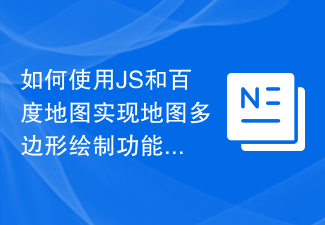 如何使用JS和百度地图实现地图多边形绘制功能Nov 21, 2023 am 10:53 AM
如何使用JS和百度地图实现地图多边形绘制功能Nov 21, 2023 am 10:53 AM如何使用JS和百度地图实现地图多边形绘制功能在现代网页开发中,地图应用已经成为常见的功能之一。而地图上绘制多边形,可以帮助我们将特定区域进行标记,方便用户进行查看和分析。本文将介绍如何使用JS和百度地图API实现地图多边形绘制功能,并提供具体的代码示例。首先,我们需要引入百度地图API。可以利用以下代码在HTML文件中导入百度地图API的JavaScript
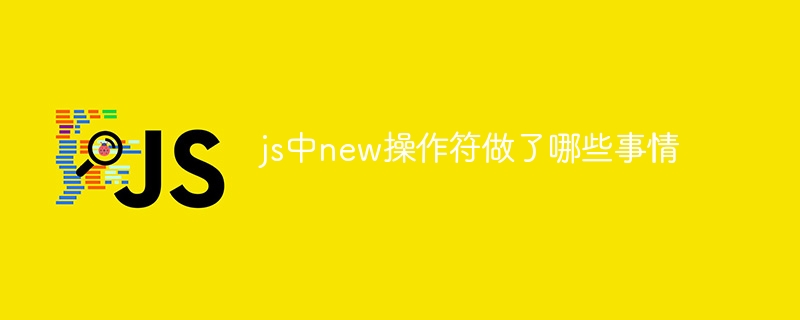 js中new操作符做了哪些事情Nov 13, 2023 pm 04:05 PM
js中new操作符做了哪些事情Nov 13, 2023 pm 04:05 PMjs中new操作符做了:1、创建一个空对象,这个新对象将成为函数的实例;2、将新对象的原型链接到构造函数的原型对象,这样新对象就可以访问构造函数原型对象中定义的属性和方法;3、将构造函数的作用域赋给新对象,这样新对象就可以通过this关键字来引用构造函数中的属性和方法;4、执行构造函数中的代码,构造函数中的代码将用于初始化新对象的属性和方法;5、如果构造函数中没有返回等等。
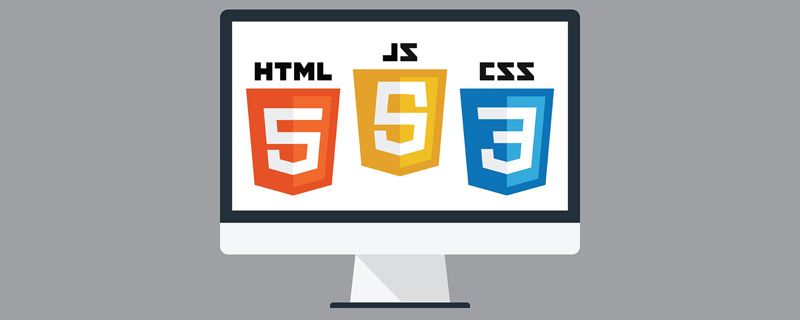 用JavaScript模拟实现打字小游戏!Aug 07, 2022 am 10:34 AM
用JavaScript模拟实现打字小游戏!Aug 07, 2022 am 10:34 AM这篇文章主要为大家详细介绍了js实现打字小游戏,文中示例代码介绍的非常详细,具有一定的参考价值,感兴趣的小伙伴们可以参考一下。
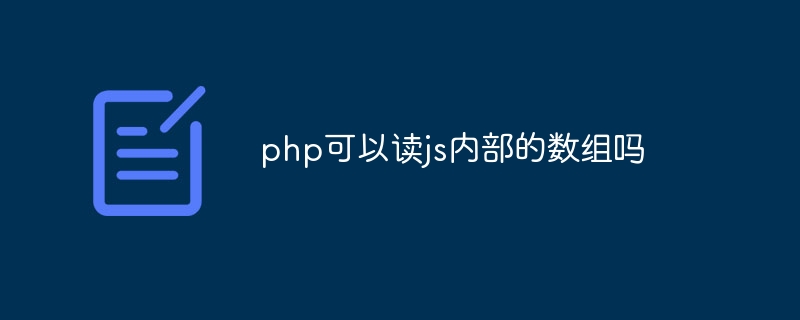 php可以读js内部的数组吗Jul 12, 2023 pm 03:41 PM
php可以读js内部的数组吗Jul 12, 2023 pm 03:41 PMphp在特定情况下可以读js内部的数组。其方法是:1、在JavaScript中,创建一个包含需要传递给PHP的数组的变量;2、使用Ajax技术将该数组发送给PHP脚本。可以使用原生的JavaScript代码或者使用基于Ajax的JavaScript库如jQuery等;3、在PHP脚本中,接收传递过来的数组数据,并进行相应的处理即可。
 js是什么编程语言?May 05, 2019 am 10:22 AM
js是什么编程语言?May 05, 2019 am 10:22 AMjs全称JavaScript,是一种具有函数优先的轻量级,直译式、解释型或即时编译型的高级编程语言,是一种属于网络的高级脚本语言;JavaScript基于原型编程、多范式的动态脚本语言,并且支持面向对象、命令式和声明式,如函数式编程。


Hot AI Tools

Undresser.AI Undress
AI-powered app for creating realistic nude photos

AI Clothes Remover
Online AI tool for removing clothes from photos.

Undress AI Tool
Undress images for free

Clothoff.io
AI clothes remover

AI Hentai Generator
Generate AI Hentai for free.

Hot Article

Hot Tools

EditPlus Chinese cracked version
Small size, syntax highlighting, does not support code prompt function

Safe Exam Browser
Safe Exam Browser is a secure browser environment for taking online exams securely. This software turns any computer into a secure workstation. It controls access to any utility and prevents students from using unauthorized resources.

Dreamweaver CS6
Visual web development tools

SublimeText3 Linux new version
SublimeText3 Linux latest version

mPDF
mPDF is a PHP library that can generate PDF files from UTF-8 encoded HTML. The original author, Ian Back, wrote mPDF to output PDF files "on the fly" from his website and handle different languages. It is slower than original scripts like HTML2FPDF and produces larger files when using Unicode fonts, but supports CSS styles etc. and has a lot of enhancements. Supports almost all languages, including RTL (Arabic and Hebrew) and CJK (Chinese, Japanese and Korean). Supports nested block-level elements (such as P, DIV),





